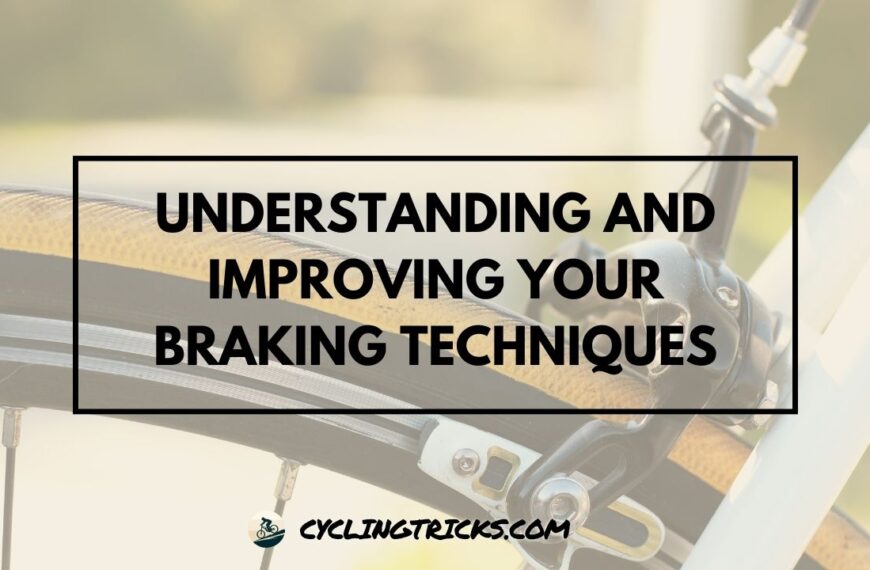Did you know that maintaining balance and riding on a straight line is a crucial skill for cyclists?
Whether you’re a beginner or an experienced rider, being able to ride in a straight line with confidence is essential for your safety and enjoyment. Improving your biking technique and mastering the art of maintaining balance can make a significant difference in your riding experience.
Key Takeaways
- Learn proper body positioning to enhance your bike control for riding in a straight line.
- Focus on a fixed point ahead to maintain a straight line while riding.
- Minimize distractions to stay on a straight line and avoid wobbling.
- Develop essential bike handling skills to master straight line riding.
- Practice maintaining balance and keeping a steady speed for better control.
Proper Body Positioning
When it comes to riding in a straight line and maintaining control of your bike, proper body positioning is absolutely essential. By understanding and implementing the correct body position, you can improve your bike control and ride with confidence.
One key aspect of proper body positioning is maintaining a relaxed and neutral posture. Avoid tensing up or hunching over the handlebars, as this can throw off your balance and hinder your ability to maintain a straight line. Instead, keep your upper body relaxed and centered, allowing your arms and shoulders to move freely.
Another important element of body positioning is distributing your weight evenly. Aim to have your weight centered over the bike, with a slight bend in your elbows and knees. This balanced position allows for better stability and control, making it easier to ride in a straight line.
Additionally, paying attention to your head and gaze can greatly impact your ability to maintain a straight line. Keep your head up and your eyes focused on the road ahead, rather than looking down at your bike or the ground. By looking forward and scanning the road, you can anticipate any obstacles or potential deviations, allowing you to make the necessary adjustments to stay on track.
Proper body positioning is the foundation for maintaining bike control while riding in a straight line. By staying relaxed, distributing your weight evenly, and keeping your head up, you can enhance your balance and improve your overall riding experience.
Focusing on a Fixed Point
When it comes to riding in a straight line, one effective technique is to focus on a fixed point ahead of you. By directing your attention to a specific object in the distance, you can improve your ability to maintain a straight line while riding.
So, how does focusing on a fixed point help you maintain a straight line? Well, when you keep your eyes locked on a stationary object, it provides you with a visual anchor. This anchor helps you stay aligned and prevents you from veering off course.
By focusing on a fixed point, you can train your body to make subtle adjustments and corrections to keep your bike balanced and centered. It allows you to anticipate any deviations from your intended path and make the necessary changes to maintain a straight line.
Not only does focusing on a fixed point improve your ability to ride in a straight line, but it also enhances your overall riding experience. It helps you feel more connected to the road and in control of your bike.
To practice this technique, choose a distant object such as a tree, lamppost, or building and keep your gaze locked on it as you ride. As you become more proficient, challenge yourself to focus on smaller and more distant objects.
It’s important to note that while focusing on a fixed point is beneficial, it shouldn’t make you neglect what’s happening immediately in front of you. Maintain awareness of your surroundings and stay alert to potential obstacles or hazards.
Remember, by focusing on a fixed point ahead of you, you can improve your ability to maintain a straight line while riding and enhance your overall biking experience.
Minimizing Distractions
Riding in a straight line requires focus and attention. Minimizing distractions is key to staying on track and maintaining control of your bike. Here are some practical ways to minimize distractions and ensure a smooth ride:
- Avoid using your phone while cycling: Texting, browsing social media, or talking on the phone can take your attention away from the road, increasing the risk of veering off course. Keep your phone tucked away or use a hands-free device if necessary.
- Choose a quiet route: If possible, opt for routes with less traffic, noise, and visual distractions. Riding on quieter roads or dedicated bike paths can help you stay focused on your line.
- Avoid cycling with headphones: Listening to music or podcasts may seem enjoyable, but it can prevent you from hearing important auditory cues, such as approaching vehicles or other cyclists. Keep both ears open to your surroundings.
- Stay mentally present: It’s natural for your mind to wander while cycling, but try to stay mentally present. Pay attention to the road ahead, anticipate potential obstacles, and make conscious adjustments to maintain your line.
- Don’t multitask: While cycling, focus solely on the task at hand. Avoid trying to juggle other activities like eating, drinking, or adjusting your gear. These actions can cause momentary lapses in concentration and compromise your ability to stay on a straight line.
“Minimizing distractions while cycling is essential for maintaining control and staying on a straight line. By implementing these practical tips, you can enjoy a safer and more focused ride.”
Remember, minimizing distractions not only helps you stay on a straight line but also improves overall safety on the road. Ride smart, stay focused, and enjoy the freedom of cycling without unnecessary distractions.
Bike Handling Skills
When it comes to riding in a straight line, having good bike handling skills is essential. These skills are the foundation for mastering straight line riding and maintaining control over your bike. By honing your bike handling skills, you’ll be able to confidently navigate straight paths while staying in control.
Balance is Key
One of the most important bike handling skills for riding in a straight line is balance. Maintaining balance allows you to stay centered on your bike and reduces the chances of wobbling or veering off course. To improve your balance, practice riding slowly in a straight line and focus on keeping your body centered over the bike.
Pro Tip: Engage your core muscles to help stabilize your body and maintain balance while riding.
Smooth and Controlled Movements
Another critical aspect of bike handling skills is making smooth and controlled movements. Avoid sudden jerks or abrupt changes in direction, as they can cause instability. Instead, focus on using controlled and gradual movements to guide your bike along a straight line.
“Smooth is fast, fast is smooth.”– Professional Cyclist
Braking and Acceleration
Understanding how to use your brakes and accelerate smoothly is vital for maintaining a straight line. When applying the brakes, do so gradually to prevent any sudden shifts in momentum. Similarly, when accelerating, gradually increase your speed to maintain stability.
Cornering Techniques
Mastering cornering techniques is also part of developing your bike handling skills. While riding in a straight line, you may encounter corners or turns that require you to adjust your trajectory without losing balance. Practice cornering techniques such as leaning into the turn and maintaining a smooth line to ensure a seamless transition.
The Importance of Practice
Improving your bike handling skills takes time and practice. Find opportunities to ride in various environments and conditions, such as hills, uneven terrain, and different weather conditions.
By exposing yourself to different situations, you’ll enhance your ability to handle your bike effectively and master riding in a straight line.
An Exercise to Improve Bike Handling Skills
Try setting up an obstacle course with cones or other markers in an open area. Challenge yourself to navigate through the course while maintaining a straight line.
Practice weaving in and out of the obstacles using smooth and controlled movements. This exercise will not only improve your bike handling skills but also increase your confidence in riding in a straight line.
Riding Technique for a Straight Line
When it comes to maintaining a straight line while riding, having the right technique is crucial. By implementing proper riding techniques, you can ensure greater stability, control, and confidence on your bike.
Here are some essential tips and guidance for improving your riding technique and maintaining a straight line:
1. Relax your upper body
Keep your upper body relaxed, with your arms slightly bent, and your grip on the handlebars firm but not tense. Avoid rigid movements and allow your body to move naturally with the bike.
2. Look ahead
Focus your gaze on the road ahead, rather than staring down at your front wheel. By looking ahead, you can anticipate any obstacles or changes in the road surface, maintaining a smooth line and avoiding sudden movements.
3. Maintain a steady pedaling rhythm
Consistency in your pedaling rhythm helps with maintaining a straight line. Aim for a smooth and controlled motion, avoiding sudden bursts or uneven pedaling.
4. Keep your weight centered
Distribute your weight evenly between your pedals to maintain balance. Avoid leaning too far forward or backward, as this can affect your bike’s stability and the ability to ride in a straight line.
5. Use your core muscles
Engage your core muscles to provide stability and support while riding. A strong core helps to maintain balance and control, which is essential for riding in a straight line.
6. Practice riding in a controlled environment
Find a quiet area, such as an empty parking lot or a quiet street, to practice riding in a straight line. This will allow you to focus on your technique without distractions and gradually build your confidence.
7. Maintain a relaxed grip
Avoid gripping the handlebars too tightly, as this can create tension in your upper body. Instead, maintain a relaxed grip that allows you to have better control and responsiveness.
“Maintaining a straight line while riding requires a combination of balance, technique, and focus. By practicing these tips and developing your riding skills, you’ll be able to navigate the roads with greater confidence and precision.”
Remember, mastering the art of riding in a straight line takes time and practice. By implementing these techniques and putting in the effort, you’ll soon find yourself riding with ease and grace, maintaining a straight line throughout your journey.
Maintaining Balance
When it comes to riding in a straight line, maintaining balance is absolutely crucial. Without proper balance, your bike control will suffer, leading to wobbling and an unstable ride. However, with the right techniques and strategies, you can improve your balance and enhance your bike control for straight line riding.
One strategy to maintain balance is to focus on your core strength and stability. Engaging your core muscles while riding helps to stabilize your body and keep you centered on your bike. This not only improves your balance but also enhances your control over the bike.
Another important aspect of maintaining balance is to distribute your weight evenly on the bike. Avoid putting excessive weight on the handlebars or leaning too far forward or backward. Instead, aim to maintain a neutral position where your weight is evenly distributed between the handlebars, saddle, and pedals.
Additionally, having the right bike fit can contribute to better balance. Ensuring that your bike is properly adjusted to your body measurements and preferences can make a significant difference in maintaining balance while riding.
Strategies for Maintaining Balance
| Strategies | Description |
|---|---|
| Engage your core muscles | Contract your abdominal and back muscles to stabilize your body and improve balance. |
| Distribute weight evenly | Avoid leaning too far forward or backward and ensure your weight is evenly distributed across the bike. |
| Get a proper bike fit | Have your bike professionally fitted to your body measurements and preferences to optimize balance and comfort. |
| Practice balance exercises | Engage in off-bike exercises and drills that improve your balance and stability. |
| Focus on smooth pedal strokes | Maintain a circular pedal motion to minimize rocking and maintain balance. |
By implementing these strategies, you can enhance your balance and improve your bike control for a smoother, more stable ride in a straight line.
Keeping a Steady Speed
When it comes to riding in a straight line, maintaining a steady speed is key. By keeping a consistent pace, you can ensure a smoother and more controlled ride. Here are some tips and tricks to help you maintain a steady speed and ride in a straight line effectively:
- Find your rhythm: Pay attention to your pedal strokes and find a cadence that feels comfortable and sustainable. This will help you maintain a steady speed as you ride.
- Focus on your breathing: Deep, controlled breaths can help you stay calm and maintain a steady rhythm. Take slow, deliberate breaths to help you stay focused and in control.
- Use your gears wisely: Shift to a gear that allows you to pedal comfortably and maintain a steady speed. Experiment with different gear combinations to find the one that works best for you.
Remember, keeping a steady speed is all about finding a balance between maintaining momentum and exerting the right amount of effort. It may take some practice, but with time, you’ll develop the skill to maintain a consistent pace and ride in a straight line with confidence.
“A steady speed is the foundation for riding in a straight line. It allows you to maintain control and stay on track.” – Cyclist Pro
Benefits of Keeping a Steady Speed
Maintaining a steady speed while riding in a straight line offers several benefits:
- Better control: By keeping a constant pace, you can have greater control over your bike and minimize the risk of wobbling or veering off course.
- Increased efficiency: Riding at a steady speed reduces unnecessary accelerations and decelerations, helping you conserve energy and ride more efficiently.
- Improved focus: When you’re not constantly adjusting your speed, you can devote more attention to maintaining a straight line and staying aware of your surroundings.
Table: Tips for Keeping a Steady Speed
| Tips | Description |
|---|---|
| 1 | Find the optimal cadence |
| 2 | Practice breathing techniques to stay calm |
| 3 | Experiment with gear combinations |
By implementing these tips and understanding the importance of maintaining a steady speed, you’ll be able to ride in a straight line more confidently and enjoy a smoother cycling experience.
Avoiding Sudden Movements
Sudden movements can throw off your balance and make it challenging to ride in a straight line. To avoid wobbling and maintain stability, it’s important to minimize abrupt actions while cycling.
Here are some tips to help you stay on a straight line by avoiding sudden movements:
1. Maintain a Smooth Pedaling Cadence
Keeping a consistent and rhythmic pedaling cadence is crucial for maintaining stability. Avoid pushing too hard on the pedals or abruptly changing your pedaling speed, as this can disrupt your balance and cause wobbling. Instead, focus on maintaining a smooth and even pedal stroke throughout your ride.
Learn the role of Cadence by clicking here.
2. Gradually Shift Your Body Weight
When shifting your body weight while cycling, do it gradually and smoothly to maintain stability. Avoid sudden and jerky movements that can upset your balance. Whether you’re leaning forward or shifting to the side, make sure to do so gradually, allowing your body to adjust to the change in weight distribution.
3. Brake and Accelerate Gradually
Braking and accelerating abruptly can affect your bike’s stability and make it harder to ride in a straight line. Instead, brake and accelerate gradually, giving yourself and your bike time to adjust to the changes in speed. This will help you maintain control and avoid sudden movements that can lead to wobbling.
4. Anticipate Obstacles and Adjust Accordingly
Scan the road ahead and anticipate any obstacles or hazards that might require you to make sudden movements. By staying alert and proactive, you can adjust your position or speed in advance, preventing the need for sudden and drastic corrections. This will help you stay on a straight line while navigating through challenging terrains.
5. Practice Smooth Transitions
Smooth transitions between different riding positions and maneuvers can contribute to maintaining a straight line. Whether you’re transitioning from a seated to a standing position or changing directions, aim for fluid and controlled movements. Practice these transitions during your training sessions to improve your overall bike handling skills.
6. Stay Relaxed and Flexible
Tension and rigidity in your body can lead to sudden movements and instability while cycling. To avoid this, focus on staying relaxed and maintaining a flexible posture.
Keep your arms and shoulders relaxed, and use your core muscles to stabilize your body. A relaxed and flexible body will help you maintain control and ride in a straight line more effectively.
Tips for Avoiding Sudden Movements:
- Maintain a smooth pedaling cadence
- Gradually shift your body weight
- Brake and accelerate gradually
- Anticipate obstacles and adjust accordingly
- Practice smooth transitions
- Stay relaxed and flexible
Tips for Riding in Windy Conditions
Riding in windy conditions can be challenging, especially when you’re trying to maintain balance and ride in a straight line. However, with the right techniques and strategies, you can navigate through the wind and stay in control. Here are some tips specifically tailored for riding in windy conditions:
- Position yourself correctly: When riding in windy conditions, it’s crucial to position your body in a way that minimizes the impact of the wind. Lean into the wind slightly by shifting your weight to the side facing the wind. This will help maintain balance and stability on your bike.
- Maintain a relaxed grip: Holding onto the handlebars too tightly can make your bike more susceptible to being blown off course by gusts of wind. Instead, maintain a relaxed grip and use your core muscles to maintain stability. Keeping your elbows slightly bent can also provide better control.
- Stay alert and anticipate gusts: Wind conditions can change suddenly, so it’s important to stay alert and anticipate gusts. Watch for flags, tree movement, or other indicators of wind direction and adjust your riding technique accordingly. Anticipating gusts and adjusting your body position in advance can help you maintain balance and stay on course.
- Choose a lower gear: Riding in windy conditions can require more effort, so it’s a good idea to choose a lower gear. This will make it easier to pedal against the wind and maintain a steady pace.
- Ride in a group: If possible, riding in a group can provide additional protection from the wind. Riding in a tight formation can create a draft, reducing the impact of the wind and making it easier to ride in a straight line.
By implementing these tips for cycling in bad weather like wind, you’ll be better equipped to handle these conditions and maintain balance while riding. Remember to always prioritize safety and use your judgment when deciding whether to ride in particularly strong or gusty winds.
Strategies for Improving Straight Line Riding
Are you looking to enhance your straight line riding skills and improve your bike control? In this section, I will share effective strategies and exercises that will help you ride in a straight line with confidence and precision.
By incorporating these tips into your training routine, you’ll be well on your way to becoming a master of straight line riding.
1. Practicing Slow Speed Maneuvers
One of the best ways to improve your bike control for straight line riding is by practicing slow speed maneuvers. Set up a designated area where you can perform tight circles, figure eights, and serpentine patterns.
By going slow and focusing on maintaining balance and control in these challenging maneuvers, you’ll develop the necessary bike handling skills to ride in a straight line effortlessly.
2. Strengthening Your Core
A strong core is essential for maintaining balance and stability on your bike. Incorporate core-strengthening exercises into your fitness routine, such as planks, bicycle crunches, and Russian twists. A strong core will not only improve your straight line riding, but it will also enhance your overall cycling performance.
3. Practicing Balance Drills
Better balance leads to better straight line riding. Incorporate balance drills into your training sessions to improve your ability to stay centered on your bike. Simple exercises like riding with one hand or lifting your feet off the pedals momentarily can help improve your balance and bike control.
4. Visualizing a Straight Line
When riding in a straight line, it’s important to have a clear mental image of the path you want to follow. Visualize a straight line extending ahead of you and focus on maintaining alignment with it. This mental exercise will help you stay on track and make minor adjustments when necessary.
5. Progressive Training
Gradually increase the difficulty of your training sessions to challenge and improve your straight line riding skills. Start with shorter distances and gradually work your way up to longer rides. Incorporate different terrains and varying weather conditions to enhance your adaptability and bike control.
6. Seeking Professional Guidance
If you’re struggling to improve your straight line riding skills, consider seeking guidance from a professional cycling coach. A coach can provide personalized feedback, identify areas for improvement, and design a training plan specifically tailored to your needs.
“By incorporating these strategies into your training routine, you can enhance your straight line riding skills and take your bike control to the next level.”
Implementing these strategies and exercises will enhance your straight line riding skills and enable you to ride with confidence and precision.
Remember to practice consistently and gradually challenge yourself to push beyond your comfort zone. With dedication and perseverance, you’ll soon become a master of riding in a straight line.
Conclusion
In conclusion, mastering the skill of riding in a straight line requires practice and the application of proper techniques and strategies.
By implementing the tips provided in this article, you can enhance your balance, refine your bike handling skills, and elevate your overall riding experience.
Remember the importance of maintaining a proper body positioning and focusing on a fixed point ahead of you. Minimizing distractions and avoiding sudden movements are also key factors in riding a straight line with ease.
Additionally, honing your bike handling skills and adopting the right riding technique will significantly contribute to your success.
By staying balanced, maintaining a steady speed, and adapting to windy conditions, you can navigate straight lines with confidence. These strategies, coupled with consistent practice, will help you improve your straight line riding abilities and enjoy the thrill of a smooth and controlled ride.
So, grab your bike, put these tips into action, and let nothing hold you back from achieving cycling excellence.









